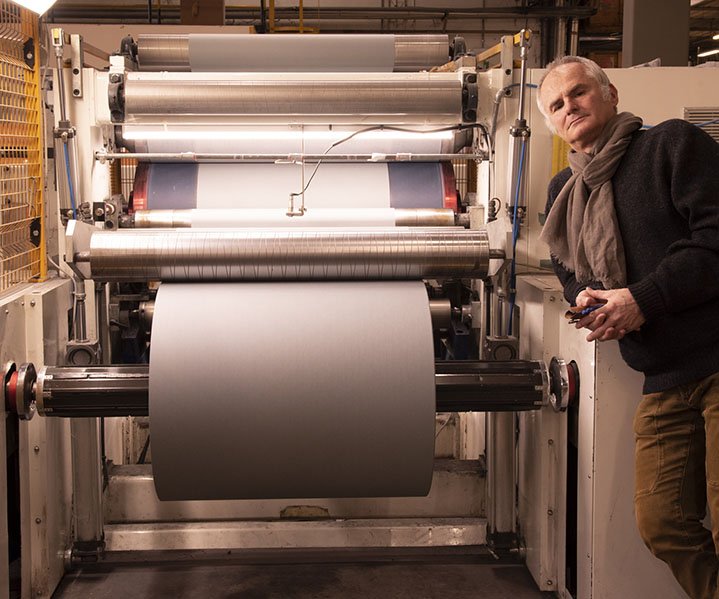Embossing creates and transmits emotions when beautiful and creative designs are imprinted on paper. This paper can be changed to a totally different material when viewed upon, and the new texture it assumes conveys a feeling when you either look at it or touch it.
This is why people prefer embossed materials for their printing and luxury packaging needs.
Embossment not only adds value to the paper sector, but also to clothing accessories because it makes the material look new, and gives it a refreshing appearance.
Embossed papers are modified both in the material and on the surface to give it a new meaning, dimensions, and convey powerful emotions. If you want to understand how it works, consider military buttons.
The three-dimensional surfaces of military buttons can be modified using contrasting elements and graphic designs. The producers create a new communication code by modifying the design, texture, and opaque and shiny surfaces.
Favini’s Embossed Offer
Favini’s Embossed Offer includes several types of embossing. They are:
- Leather and hammer
- Classic linen and striped
- The texture from geometric and nature-inspired designs
Most of these embossments are widely used, but there are some made for a specific product. A great example of this is Carapace. It’s the embossing used for Remake, an ecological paper series.
How is Carapace emboss developed?
Remake is a Favini paper that was creatively manufactured from reused leather, and now it’s made available in a Carapace version.
How can one create a design and imprint it on a paper’s surface?
In an interview, Emanuele Ricci explains how he created the Carapace texture.
In a bid to create a new embossed surface for the paper, the designer analyses the previous version. He sees that the conventional texture will not allow the true intrinsic beauty of the paper to come alive. It will destroy its materiality.
Emanuele says,
“I had to look beyond the conventional concept of texture because I wanted to reveal the material structure of Remake. I made it in such a way that the eye would want to study a non-design to understand the matter, without any form of distraction”
Now, the concept or idea of non-design is more difficult to implement than most people imagine. The designer allowed himself to be inspired by certain past events: a set of non-modulating sounds, several moving grey dots followed by white noise, and the old type of televisions with missing contacts.
After the designer made the prototype, the next phase was the Engineering Phase.
This phase had a lot of problems because Emanuele discovered that the design he carefully made on a small-dimensional surface and by hand had a lot of issues when moved to the industrial level embossing cylinder (2-metre). He had to undergo several months of study, then researched and tested it before he could produce a handmade design with the same aesthetics, using an embossing cylinder.
Carapace was developed.
Features of the Carapace Embossing
Emanuele explained that,
“The Carapace embossing is designed with a sequence of little shadowy areas of various shades. They are used collectively with their individual intensities. Light modulation produces this aesthetics, and it’s not related to a representative design”
The strength of the Carapace embossing lies in its non-homogenous texture. Because of this, it doesn’t have a particular design pattern that’s easily recognizable. The texture is designed in such a way that the print or design seems to be ‘floating’ on the surface.
The feature has made this paper a powerful display and communication tool.
Carapace: a strategic and powerful embossing tool
Emanuele Ricci explains that the Carapace emboss is a great support to the design imprinted on the paper. When this emboss comes in contact with the design, a powerful communication synergy is created.
The design and emboss go hand in hand. You can’t say that one plays a more powerful role. The support system that Carapace provides is to attract attention and transmit the right emotion. The carapace is one of the most important elements in any advanced communication system. It can be used in different areas: graphics, packaging, exhibition, etc.
The “Fashion from Nature” exhibition held at the London Victoria and Albert Museum used the Remake Carapace Emboss. It allowed them to produce very descriptive labels for the exhibits, and serve as a cover plastered on mannequins.
Read the “Soil, Roots, and Plants: The Exhibition Design of Fashioned from Nature” for other information.
The Remake Carapace is also used to create covers of editorial projects and catalogs. A great example is the Albino Pozzi Catalogue and Sirene Journal’s “Island Passports”
We thank Ricci for his insightful explanation of how material embossment processes work.



